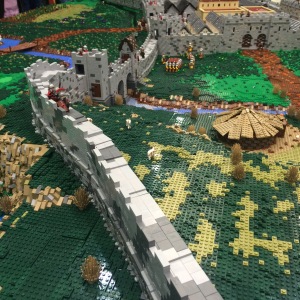The only thing I haven’t covered, since last month’s Heritage Jam event, is the on-line entries, which were more numerous. You can read about them all here (scroll down), but I want to use this last (I promise) Heritage Jam 2015 post to pick out just a few of my favorites.
First up is my award for Most Fun, which goes to Howard Williams‘ Heritage Jam: Conserving the Past, an investigation of the actual jams available for sale at heritage sites on his family holiday in Wales. But its not all fruit-spread based humour, he also manages to fit in this specialist subject: the heritage of death, and even the death of heritage.
Howard also contributes to the winning team entry for the on-line competition. This is a shoe-in on my own favorites list because of it’s medium. The Volund Stories: Weyland the Smith is a comic, created by Hannah Kate Sackett. I love comics, and it inspires me to pick up my pencil again and practice drawing. (My problem is that I use a tablet for everything nowadays, and my fingers have forgotten how to control things like pens and pencils.) Only the first few pages were submitted for Heritage Jam, and I eagerly await the completed work, which will be published (free) on both Kate and Howard’s blogs.
The individual winner was also another of my favorites, Cryptoporticus by Anthony Masinton. This is a “first-person walking simulator” (in the style of one of my favorite games Dear Esther) around a mysterious imaginary museum. To tell the truth, when I saw this (and another which I’ll mention later) appear in the Heritage Jam gallery in the last few hours of wrestling with my own entry, I almost gave up. This looked so brilliant, I thought mine and Cat’s work could not possibly compete.
I only managed to get a few minutes with the actual game during the event itself, but I liked it very much. Sadly the link to download the game on the Heritage Jam page no-longer works. I hope this is only because Anthony is dealing with a couple of bugs he couldn’t manage to fix before the deadline, and the links will eventually work again, because I for one want to have a go playing it right through.
The other entry which almost made me give up my own efforts was the excellent website Epi.Curio, by the appropriately named Katherine Cook. This encourages visitors to interact with the past, and with museum collections, in the multi-sensory sphere of cooking and eating. It’s just such a brilliant idea, presented in a beautiful responsive website. I am overwhelmed and insanely jealous of Katherine’s imagination. (And yes, before you ask, there is a recipe for an actual Heritage Jam.) I haven’t actually tried any of the recipes yet, but I’m thinking about making Pan de Muertos for the end of the month.

So that’s a quick whizz through my personal favorites, though there’s plenty more quality stuff in the gallery though, check out Shawn Graham’s Listening to Watling Street, for example. Indeed, there was so much high quality work on show, that wen I submitted mine and Cat’s piece, I was feeling quite subdued, depressed even, despite the amazing etheral quality of Cat’s auralisation. I felt we had worked really hard, but hadn’t come close to some of the showstoppers that were already entered.
So imagine my surprise, and absolute joy, when on my way home from the event, I saw the tweet from Heritage Jam that our piece had been Highly Commended in the judging of the on-line entries. Despite being on the winning team at the in-person event, I was even more excited by this “second place” than that victory. The judges comments were so kind, so I’ll finish with them (and the electronic versions of our certificates).
The breath-taking audio reconstructions included within this complex project captured our judges imaginations and hearts whilst the intricate layering of narrative and interpretive contexts left them wanting more. They were hugely complimentary of the way in which the duo had structured the piece to meaningfully showcase and integrate narrative, reconstruction and data into the piece. The interactive nature of the project promoted significant discussion on the topic of agency, control and interpretation in museums and collections, making it not only a thought provoking piece in its own right, but also in relation to wider heritage themes and issues. The technicality, scale and artful nature of the project, as well as the thoughtful, comprehensive paradata far exceeded the expectations of our judges for a short-term “jam” project, leading them to crown “Among the Ruins” as the highly commended team entry for the 2015 Heritage Jam








